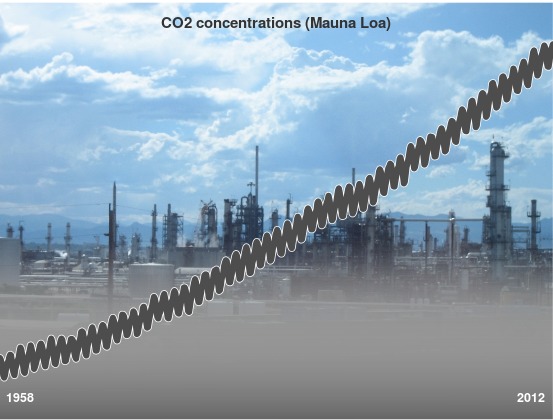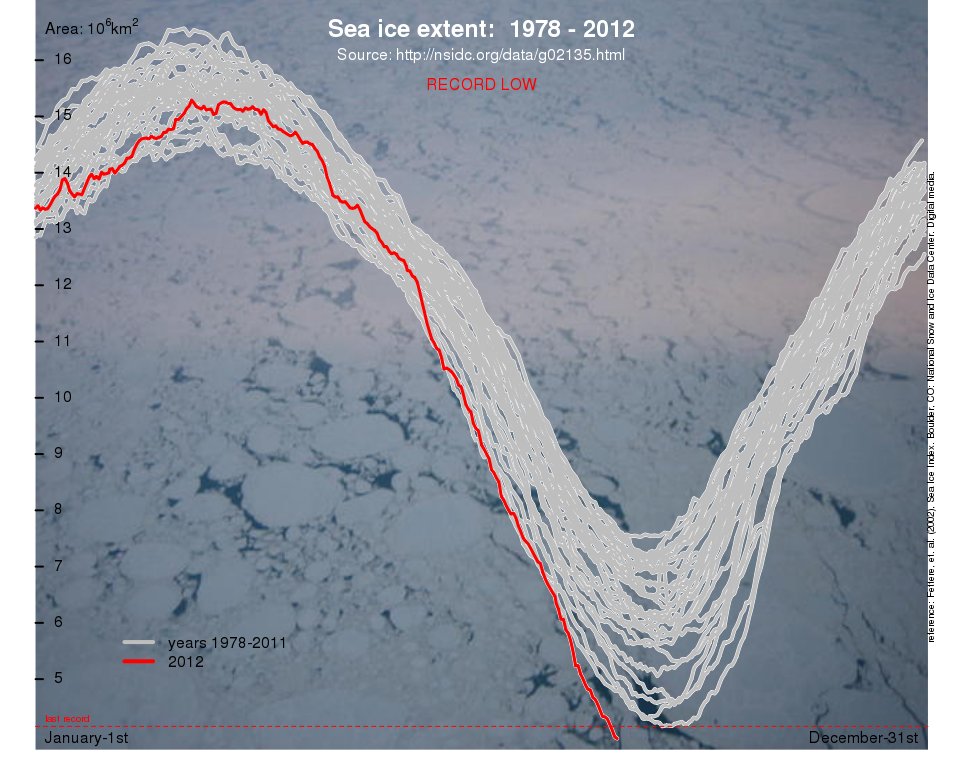What is the most important climate condition to keep tabs on? We have recently mentioned the record-low Arctic sea-ice extent, but hurricanes this year seem to be getting the most attention because of timing ofHurricane Isaac (I know of no evidence suggesting that the Arctic sea-ice has such a direct impact on U.S. politics!).
In addition, the status of ENSO issued by NOAA on August 27, 2012, states that El Niño conditions are likely to develop during August or September 2012, although the present state is classified as ‘ENSO-neutral‘. El Niño has a strong influence on local economies and societies in fairly extensive regions of the world. ENSO is a natural phenomenon, but may change under a changing climate and is interesting to watch over the long term.
It’s important to avoid getting lost into single indicators, however, as the climate system is complex, with many different parts interacting with one another. The American Meteorological Society (AMS) recently put out a statement on climate change, referring to a wide range of different climate indicators (here is a link for the most common ones). The AMS is not alone – the National Academy for Sciences (NAS) is also concerned about our climate and its many aspects: A fairly recent movie called Climate change at the NAS Climate Change: Lines of Evidence provides a comprehensive overview.
Both AMS and NAS accounts provide a rich picture of many different aspects with many different (important) details, which make them fairly long and complicated. This is why simple indices sometimes are used – to convey a simple message. We need both, and that’s why the NAS video and the AMS statement are so valuable – at least for the readers who understand what they are talking about. I’m not sure that everybody does, though.




